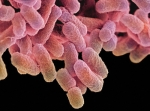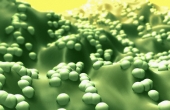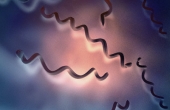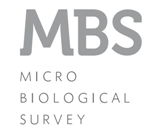General features
- Single-celled organisms without organized and protected nucleus (prokaryotes), have only one circular chromosome
- Size of the cells from 1 to 5 μm
- Present in all habitats
- Some may live in extreme environments (extremophiles)
- Some may live with humans without causing disease (saprophytic)
- Some can cause serious diseases in humans (pathogens)
Classification according to form
 |
 |
 |
|---|---|---|
| Bacilli | Cocci | Spirilla |
Classification according to wall
- Gram-positive: cell wall made of peptidoglycan and lipoteichoic acids
- Gram-negative: cell wall made of peptidoglycan and outer membrane characterized by the presence of lipopolysaccharides and proteins
Reproduction
Asexual reproduction, occuring by cell division, is called binary fission. The two bacterial cells resulting from the division of the parent cell are genetically identical: the cell wall and the plasma membrane are introflex and the molecule of DNA is duplicated by a semiconservative mechanism of duplication.
Read more:
Microbiology and Immunology On-line
Todar's Online Textbook of Bacteriology
Are you interested in receiving more information about the advantages of cost, speed and easiness of the MBS-HACCP&WATER Easy test ?


